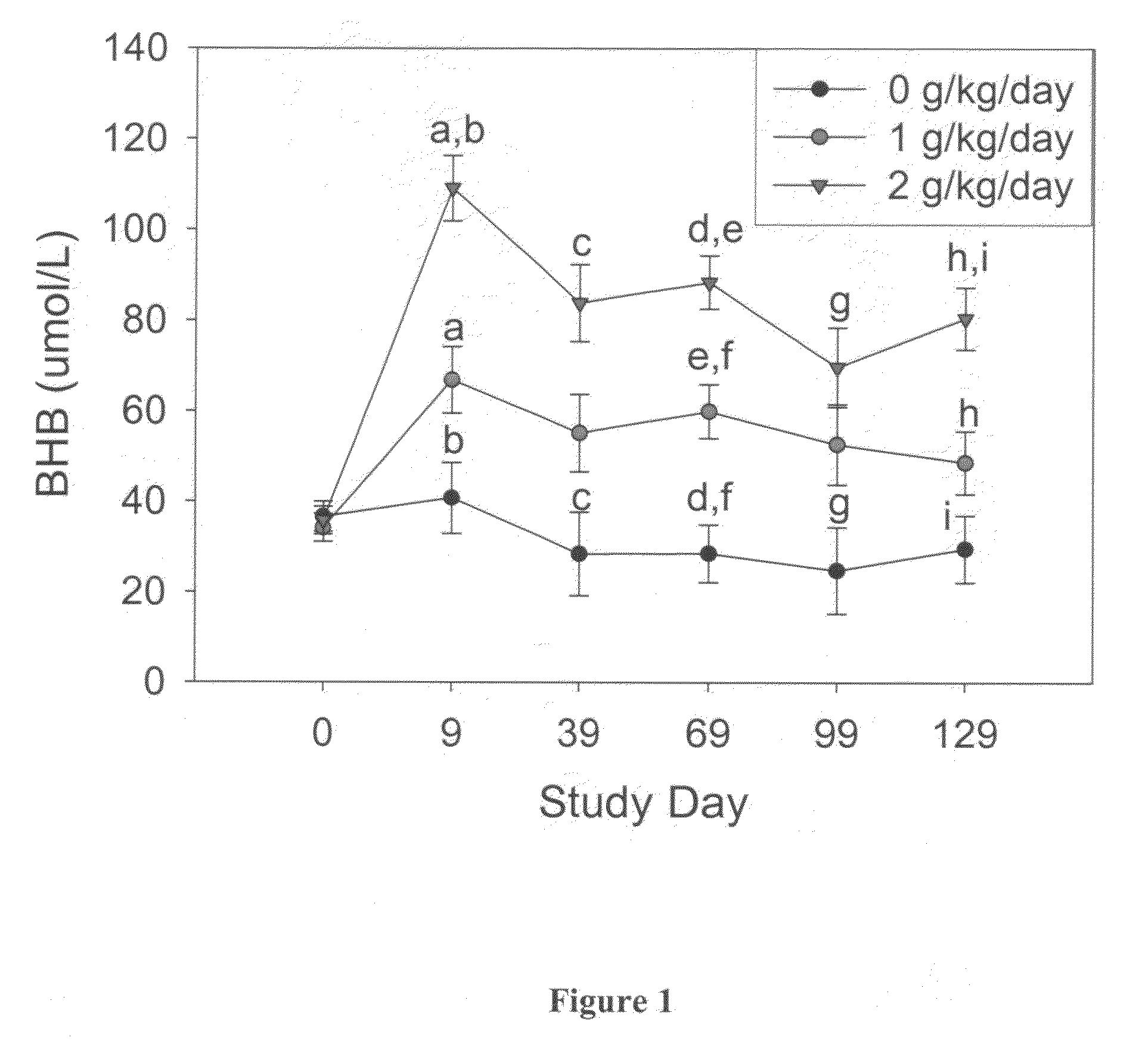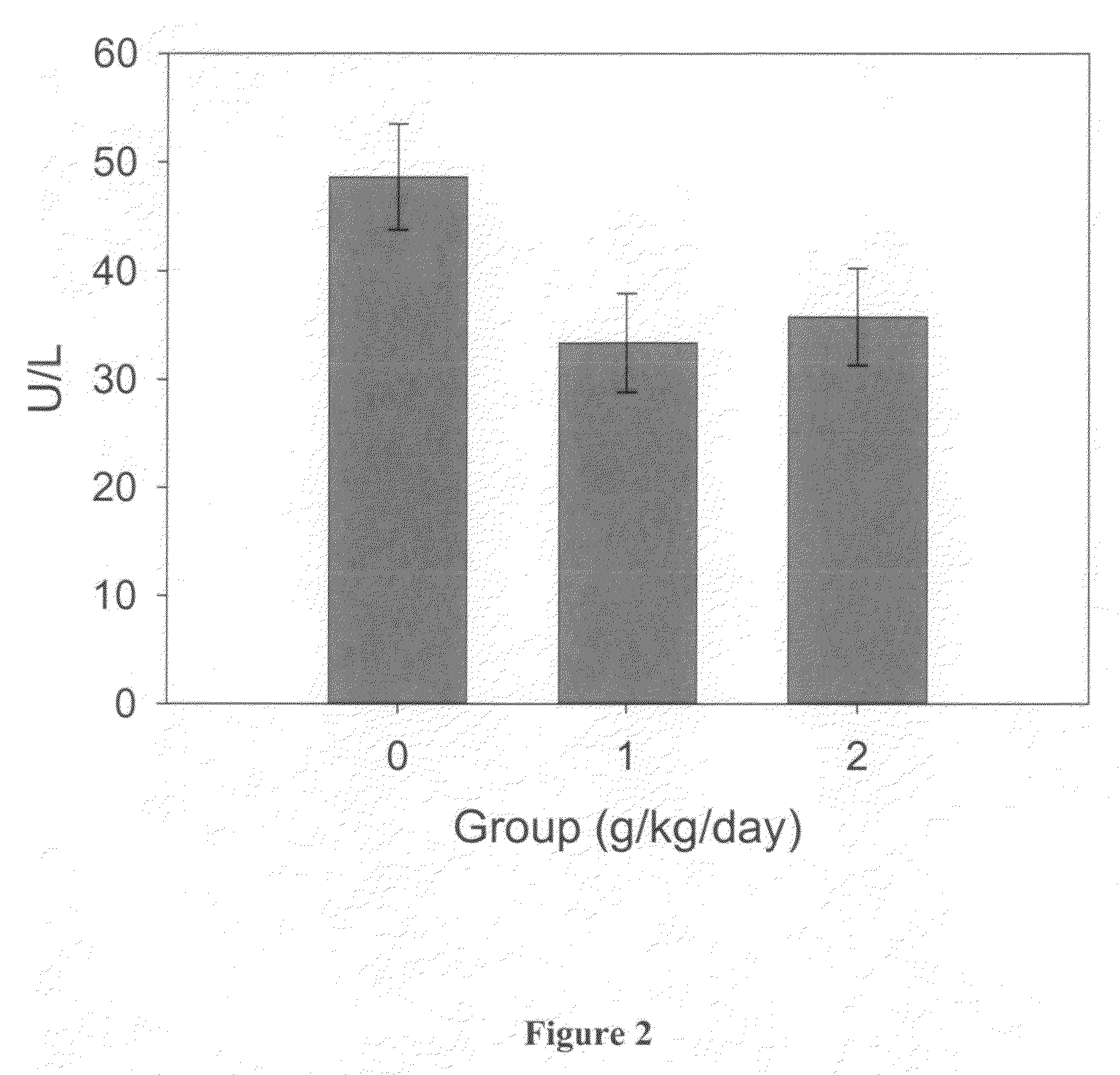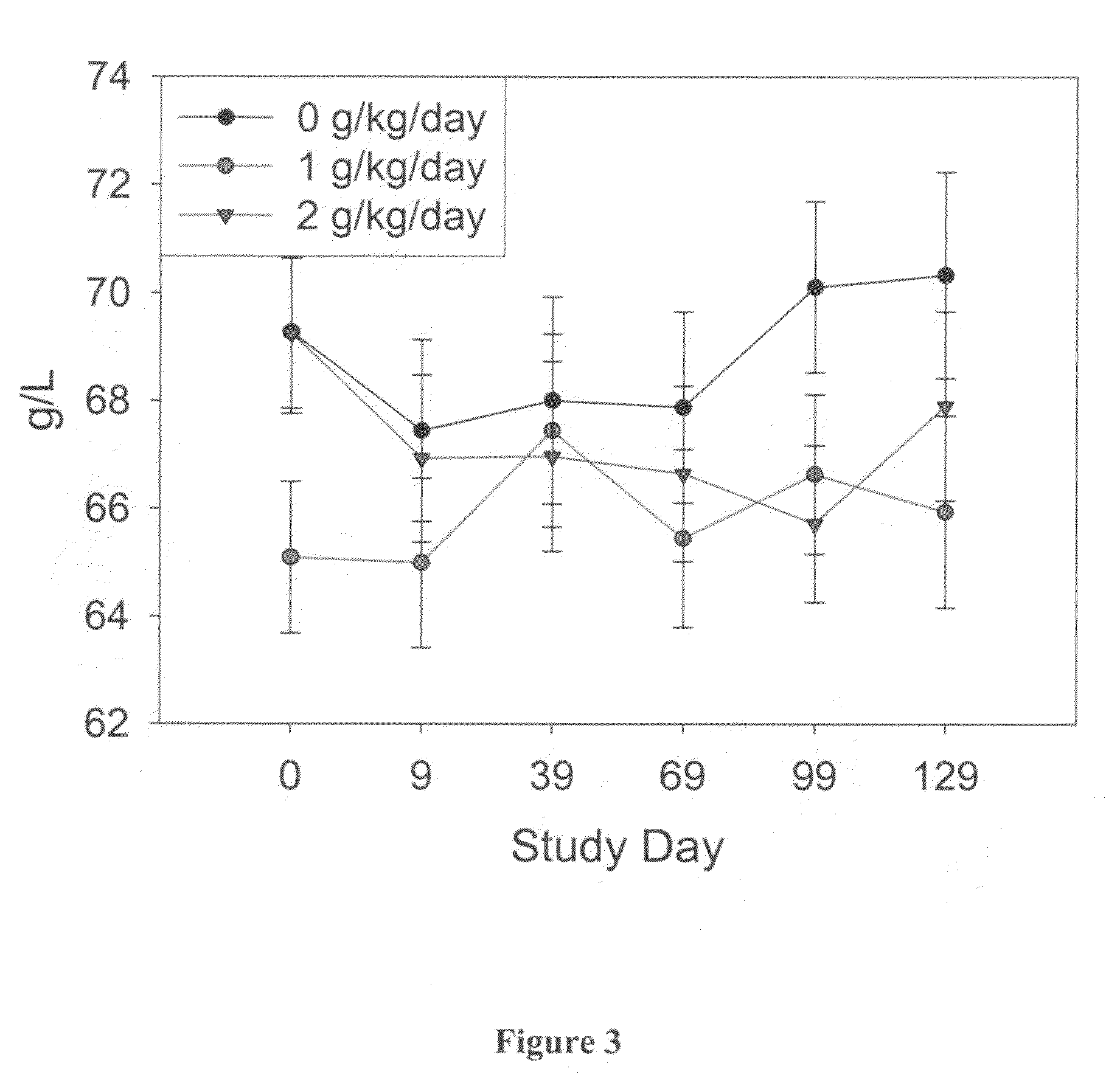Compositions and Methods for Preserving Brain Function
a brain function and composition technology, applied in the field of mammalian nutrition, can solve the problems of reduced cognitive function, reduced learning or learning rate, association cognitive impairment, etc., and achieve the effect of preventing, reducing or delaying the decline of one or more cognitive functions, motor performance, or cerebrovascular function
- Summary
- Abstract
- Description
- Claims
- Application Information
AI Technical Summary
Benefits of technology
Problems solved by technology
Method used
Image
Examples
example 1
Animals and Diets
[0188]Fifty-four animals, ranging in age from 8-11 years, were divided into three cognitively-equivalent treatment groups, using errors-to-criterion on tests of object discrimination and reversal learning (Table 1). The animals were free from any pathological condition and were considered healthy aged canines. The first group, the control group, was fed a basal diet consisting of approximately 10% moisture, 26% crude protein, 16% fat, and 6% ash, without any MCT supplementation. The basal diet consisted of ingredients commonly used in companion animal diets, such as brewer rice, chicken, whole wheat, poultry-by-product meal, corn gluten meal, corn grain, animal fat, corn bran, dried egg product, flavor enhancers, vitamins, and minerals. MCTs administered to the animals for these experiments were of the general formula:
where, in these applications, greater than 95% of the R1, R2, and R3 were fatty acids having 8 carbons in the carbon backbone and esterified to the gl...
example 2
Blood Analyses
[0193]Blood hematology and biochemistry testing was performed at baseline, day 9 and approximately every 30 days, until the animal completed cognitive testing. Blood chemistry and hematology were monitored as an index of general health, and as a measure of the animals' response to treatment. Additional serum and plasma samples were collected and archived. The animals did not all receive an equal number of blood samples because the animals did not complete the entire study at the same rate. As a result, only the blood hematology and biochemistry obtained at study day 0 (T0), 9 (T1), 39 (T2), 69 (T3), 99 (T4) and 129 (T5) were included in the analysis.
[0194]Each blood measure was analyzed using separate repeated-measures ANCOVA with treatment group (0 vs. 1 vs. 2 g / kg / day) as a between-subject variable and time-point (T0 vs. T1 vs. T2 vs. T3 vs. T4 vs. T5) as a within-subject variable. Cohort (1 vs. 2 vs. 3) served as the covariate.
[0195]The blood measurements also inclu...
example 3
Analysis of Treatment Effects on Dog Activity and Behavior
[0201]Activity analysis. The activity rhythms were measured using the Mini-Mitter® Actiwatch-16® activity monitoring system. Activity counts were recorded every 30 s for a period of 3 days. From these data, average activity levels were calculated for two time periods: (1) sunset to sunrise (night), and (2) sunrise to sunset (day). In addition, the average lag between sunrise and activity onset, defined as a 30-minute bout of activity, was calculated for each animal, with negative scores representing activity onset prior to sunrise.
[0202]Behavioral analysis. Two separate tests were administered to assess changes in spontaneous, exploratory and social behaviors: the curiosity test and the human interaction test. The tests were administered twice: once prior to treatment onset (baseline) and once after approximately 2 months of treatment. Spontaneous behaviors that were quantified included: total locomotor activity, urination, s...
PUM
| Property | Measurement | Unit |
|---|---|---|
| body weight | aaaaa | aaaaa |
| weight | aaaaa | aaaaa |
| weight | aaaaa | aaaaa |
Abstract
Description
Claims
Application Information
 Login to view more
Login to view more - R&D Engineer
- R&D Manager
- IP Professional
- Industry Leading Data Capabilities
- Powerful AI technology
- Patent DNA Extraction
Browse by: Latest US Patents, China's latest patents, Technical Efficacy Thesaurus, Application Domain, Technology Topic.
© 2024 PatSnap. All rights reserved.Legal|Privacy policy|Modern Slavery Act Transparency Statement|Sitemap



